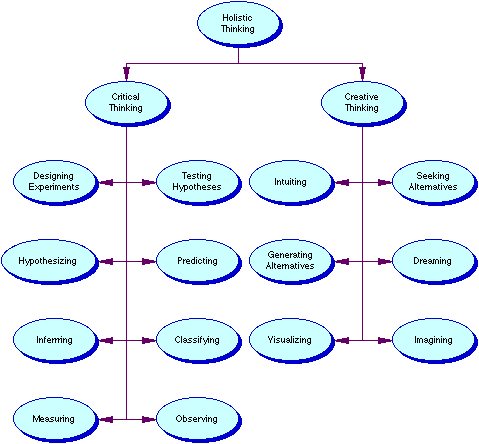![]()
![]()
Critical and creative thinking are counterparts of a wholistic view of student thinking. They are not opposite; they are indeed complimentary (Figure 1). Critical thinking is "reasonable, reflective thinking that is focused on deciding what to believe or do." Critical thinkers in a science class have learned how to look at phenomena aware of their own biases, and approach the situation objectively and logically. Creative thinking, on the other hand, is the ability to form new combinations of ideas to fulfill a need. Examples of creative thinking in science classes are brainstorming, creating alternative hypotheses, synthesizing information and thinking laterally.

Figure 8.1. Holistic Model of Thinking
Critical thinking and creative thinking can be contrasted (Figure 1) to indicate the differences in these forms of thinking. Look over this list of science teaching tasks and decide which ones are examples of critical thinking and which are examples of creative thinking:
• Summarizing the main ideas in a chapter on forces and momentum.• Building models of atoms using clay and toothpicks.
• Inventing a system that will measure the mass of an elephant.
• Writing review question based on specific pages in the science textbook.
• Observing an event and then writing at least three alternative explanations.
• Estimating the volume of their biology I classroom.
• Listing as many observations of a burning candle during a five minute observation session.
There are many strategies to foster creative and critical thinking in the science classroom. Three assertions will guide our approach to these strategies that foster this development. Critical and creative thinking are fostered in:
• interactive classrooms that focus on inquiry teaching• classrooms that deal with controversies thereby encouraging discussion, debate and discourse.
• classroom that bring students in contact with real world problem solving.